On India’s 77th Independence Day, in typical Google fashion, the tech giant dedicated a textile themed Doodle to mark the occasion. The vast range of fabrics and textiles in India is a beautiful and fitting reflection of the colours, arts, and diversity of the country itself. Created by a local artist Namrata Kumar, the doodle features 8 textiles of India from across the country.

I personally resonated with the Doodle as someone who’s obsessed with Indian fabrics. People call it my boho phase, but as far back as I can remember, I’d potter about in the most crowded, old shopping districts of whichever city I’d be in and buy fabrics to get my clothes tailored. The leftover scraps would be reused as cushion covers, purses, and the like. (You see, I’ve always been conscious about recycling and reusing!)
Even to this day, the idea of buying natural fabrics in beautiful rich tones that compliment the Indian skin employing old manual techniques like hand blocks, embroidery and tie ‘n dye get me excited way over any off-the-shelf fabrics and clothes. My wardrobe boasts shirts, tops, Kurtas and pants in fabrics like Ikat, Ajrak and more, much more than the Zaras and the H&Ms.
At a time when awareness about synthetic fabrics like polyester, nylon and others and their harmful effects on the environment is on the rise, natural Indian fabrics and their eco-friendly methods of production deserve a renaissance. The Prime Minister’s appeal and campaigning for Khadi has already seen a revival of the hand-spun Gandhiian fabric.
Here’s a handy guide to know some prominent Indian textiles, how to recognize them, where to buy them and what they’re good for.
1. Ikat from Orissa/ Pochampally Ikat from Andhra Pradesh
The fabric with intricate motifs and its signature geometrical and zigzag patterns happens to be one of my favourites. It is painstakingly weaved using a hand loom making it one of the most laborious hand-made weaves. While its silk version is conventionally used for saris, the cotton ones can be used as salwars, kurtis, cushions, bedsheets, dresses, tops and even furniture! I personally have many clothes ranging from a blazer to a formal shirt in Ikat fabric. While Ikat or Ikkat is the name of the weave, its regional variations are usually found in Pochampally Ikat in Andhra Pradesh/Telengana and the Sambalpuri Ikat in Orissa.
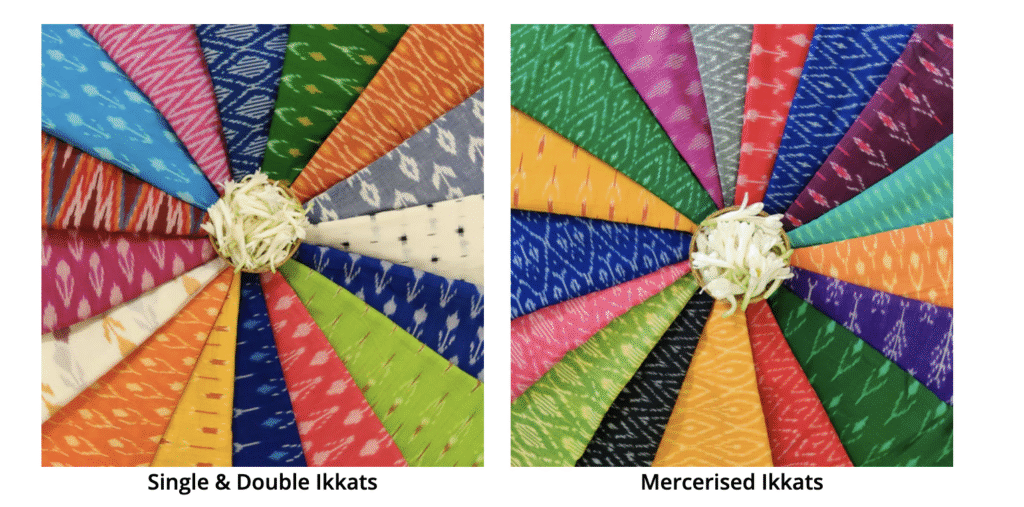
2. Phulkari from Punjab
More than a fabric, Phulkari is an art form from Punjab that involves hand-embroidery in varying geometrical patterns with dense threadwork. Usually worn as dupattas, phulkari is vibrant and testament to the hard work of the workers who painstakingly etch and sew each pattern. More details on this elaborate craft here.
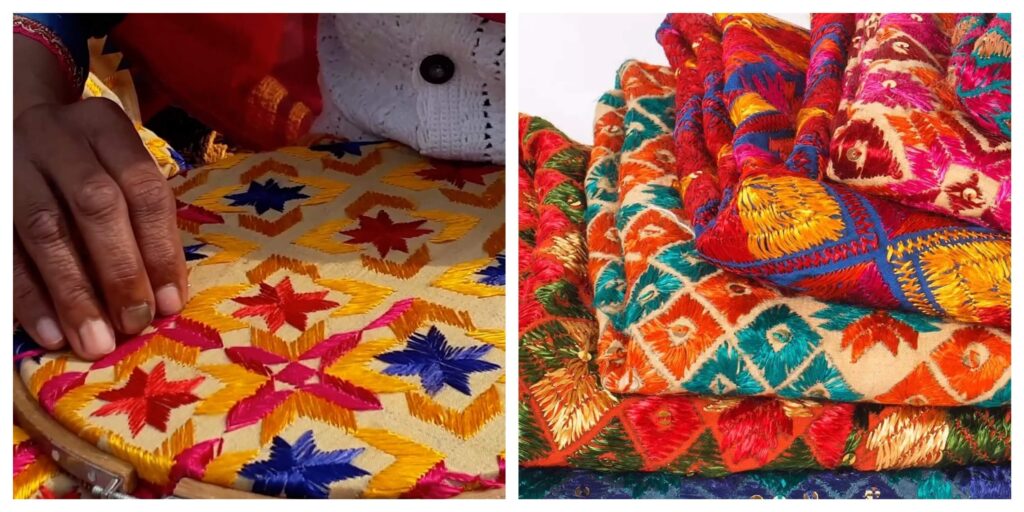
3. Lucknowi Chikan, UP
No mention of Indian textiles can be complete without the famous Lucknowi Chikankari or simply chikan work. (Not to be confused with the edible chicken, which too Lucknow is famous for!) Chikankari works involve intricate embroidery with white thread which can adorn borders, edges or be all over in a Kurta or saris. Of late, Chikankari lehengas have been all the rage with celebrities and many like Kiara Advani and others have worn heavy embellished versions of Chikan lehengas as part of their wedding trousseau. Best place to buy them would be of course the bylanes of Lucknow city, but good news is that Chikan fabrics are now widely available online and elsewhere, including House of Chikan Kari, one of the more prominent names for the fabrics.
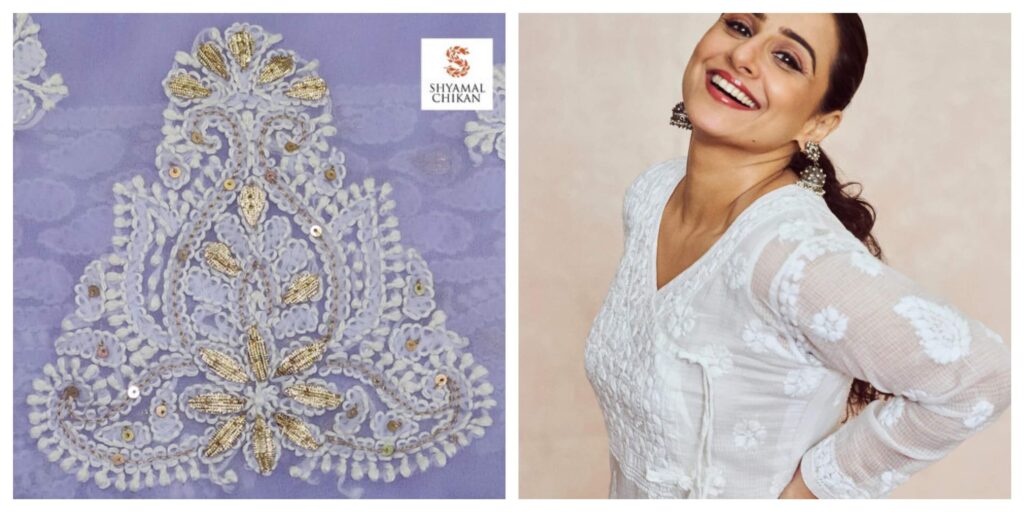
4. Cotton hand block prints, Rajasthan
The vibrant state of Rajasthan has arguably contributed more to Indian textiles than any other state in India. Ranging from tie n dye to the Bandhani to Ajjrak and the famous Hand Block prints, most Rajathani textile art involves a form of fabric dyes and art of dying the fabrics in interesting ways. These days the intricate floral hand blocks prints of Rajasthan are widely used in home linen like Bedsheets, Tablecovers, cushions and more. But the smooth and lightweight cotton hand block kurtas are a fashion classic. Some of the best places to shop for Rajasthani fabrics and readymades online would be Jaypore, FabIndia, Anokhi, Farida Gupta, other than the many physical stores that line Jaipur’s shopping districts.
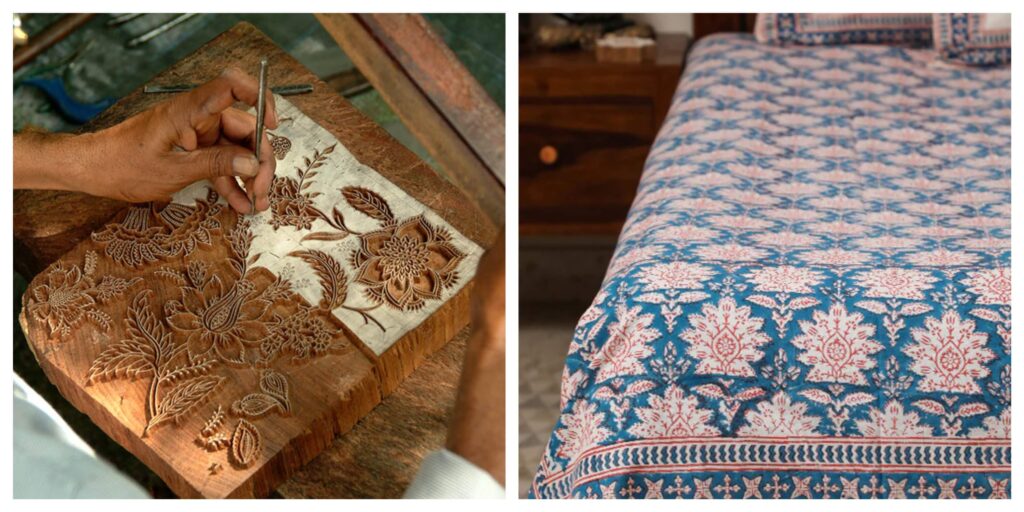
5. Kanjeevaram Silk, Tamil Nadu
Kanjeevaram is a form of silk weaving that comes from the Southern Indian state of Tamil Nadu. Like Banarasi or Mysore silk, Kanjeevaram too is an elaborate and laborious art form and hence the high price tag. No South Indian woman’s wardrobe would be complete without a Kanjeevaram silk saree or two, but Bollywood doyen Rekha has immortalized Kanjeevaram sarees by wearing them at almost every public event.
6. Banarasi silk/ Ahimsa Silk, Varanasi, UP
Much as I love the beautiful silks, being a vegan means I cannot in good conscience support a fabric that involves killing millions of silkworms alive. But thankfully a new variant of silk has emerged, usually called vegan silk or ahimsa silk, the fabric is made from a process that doesn’t kill the silkworms. A good brand to try would be ahimsa_sillk owned by Russian Chintamani Diana Diana who calls Vrindavan her hometown.
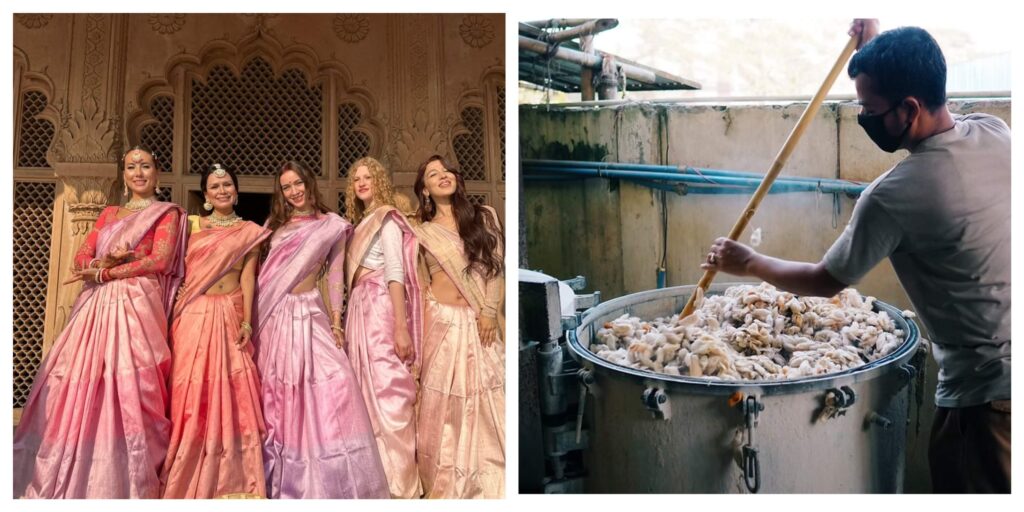
7. Patola, Gujarat
The western Indian state of Gujarat is only second to Rajasthan when it comes to being home to hundreds of textiles and textile art. Patola happens to be the most exclusive and intricate art form of weaving. Apparently a Patola saree can take anywhere from a month to several months to weave and costs high accordingly. Unsurprisingly the art of Patola is a dying one and only a handful of families in Patan, Gujarat are still engaged in the art. Nita Ambani, wife of India’s richest man Mukesh Ambani is usually seen patronizing the art form with her beautiful Patola sarees. But while not many can shell out a few lacs for a saree, today many dupes or “Patola Prints” throng the markets.
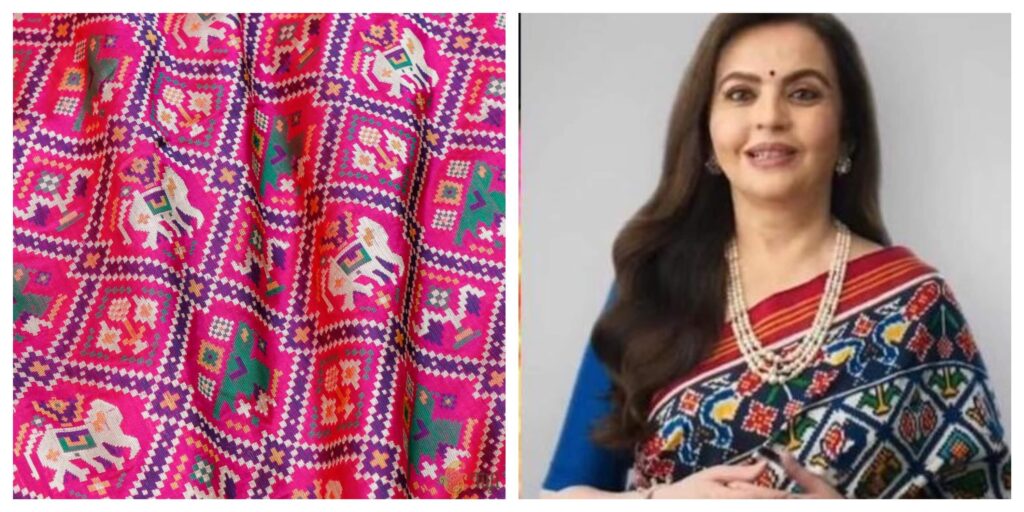
8. Kantha, West Bengal/Assam
Kantha work is an ancient craft originating from West Bengal and Assam. Kantha includes a thin but intricate thread work running all over the fabric. These motifs can depict ancient folklore, sceneries, or simply a floral landscape. The thread work is usually done on silk sarees, but these days, bedsheets and bedcovers with kantha work are famous too. Best place to buy Kantha would be local handloom stores in Bengal and Assam or online stores like Ajio.
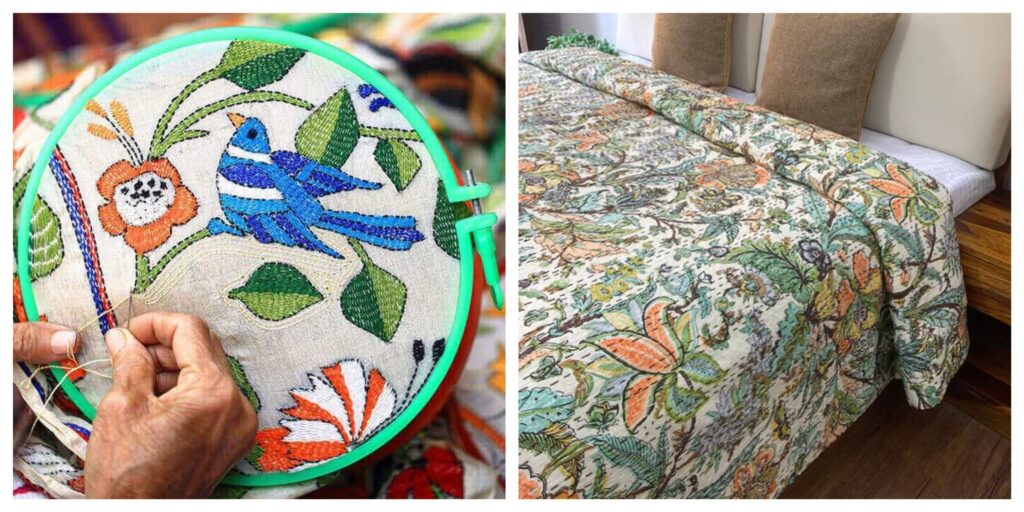
9. Pattu Weaves, Himachal Pradesh/ Nagaland, Meghalaya
The Pattu weave originates from Himachal and involves geometrical woollen weaved fabrics in colours like orange, pink and blue and is usually seen on caps and shawls. One would be hard pressed to travel to the Himalayas and not spot the colourful hats on men and some women alike! Bollywood actor and MP Kangana Ranaut often incorporates them in her haute couture looks, putting this true handicraft on the mainstream. The Pattu weave finds its cousins in the Northeast and even Nepal.
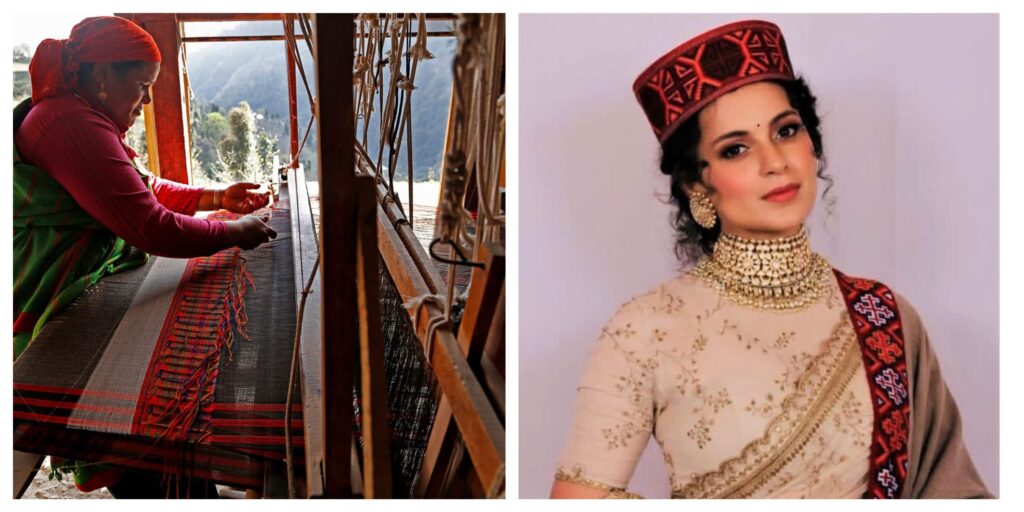
10. Khadi, country wide
Khadi is a hand-spun and hand-woven natural fiber cloth that holds deep historical and cultural significance in India. Made from cotton, silk, or wool, Khadi became a symbol of self-reliance and resistance during India’s struggle for independence from British rule. Popularized by Mahatma Gandhi, it was more than just a fabric—it was a powerful tool of non-violent protest.
By encouraging Indians to spin their own cloth and boycott British-made textiles, Gandhi turned Khadi into a unifying force that empowered rural communities and promoted economic self-sufficiency. The spinning wheel, or charkha, came to represent the dignity of labor and national pride. Even today, Khadi is celebrated not just for its eco-friendly and artisanal qualities, but as a reminder of India’s path to freedom and its enduring spirit of self-reliance.
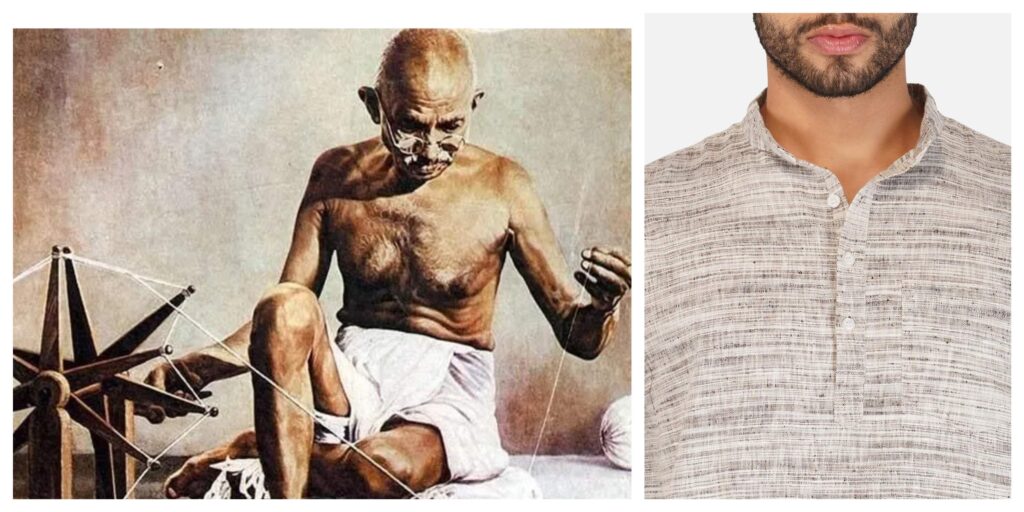
Where to buy the natural Indian textiles?
Natural textiles may be more expensive and the temptation to go for the shinier, less expensive synthetic alternatives may be strong, but do yourself and your local economy a favour by actively supporting and buying fabrics and readymade clothes in natural Indian textiles. Here’s where to buy them and support textile arts and keep them flourishing.
Local markets: To be honest, the best place to buy Indian textiles would be in the shopping districts of the state that particular art form comes from. For example, the best place to buy cotton hand block bedlinen would be the johari bazzar in Jaipur.
Exhibitions: If going there is not an option, then keep an eye on exhibitions and art festivals in your city which see participation from artisans from across the country. For eg, the Dastkar festival in New Delhi and the 1000 hands festival in Bangalore are bi-annual art exhibitions that feature sellers of textiles from their states, amongst other articles.
Whatsapp groups: Some of my best purchases of Indian textiles have been through small sellers on Whatsapp groups. I get a regular supply of my Jaipuri bedsheets and Ikat fabrics from Whatsapp sellers who are the most raw version of D2C (Direct to Consumer) in India.
Online stores: And of course, these days you can buy Indian textiles online and get them shipped to wherever you are. Some of the best websites to buy Indian textiles online would be Ajio, Jaypore, Amala Earth, Okhai, FabIndia, Mother Earth and many other individual brands and labels.
Are there any other textile or fabric arts you love that I might have missed out? Do share in the comments.
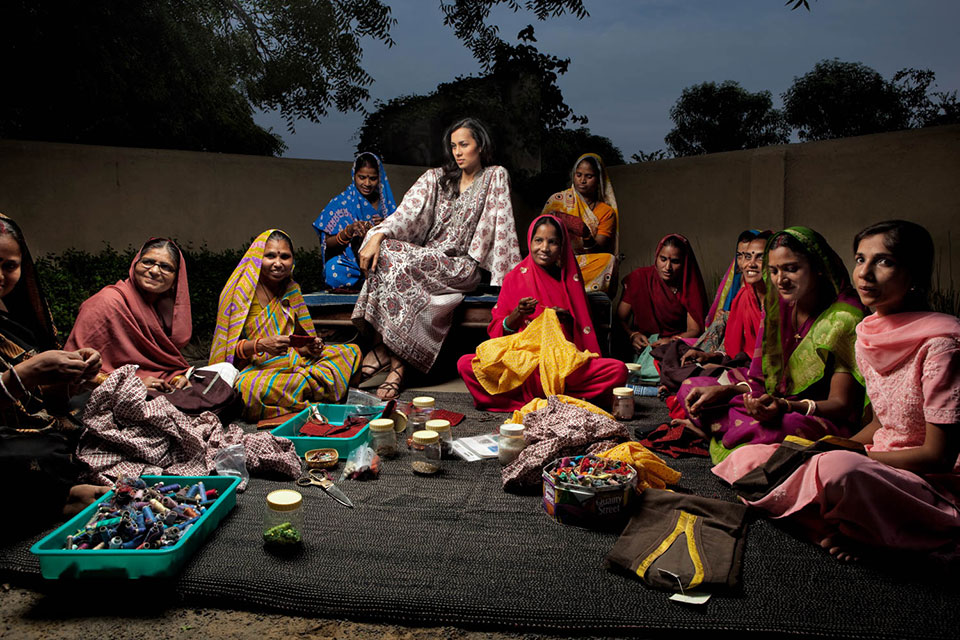


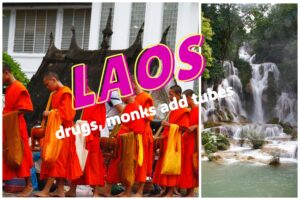



One Thought to “Top 10 Natural Indian Textiles And Textile Art Forms, How To Use Them And Where to Buy them”
[…] course any trip to Rajasthan is incomplete without going overboard shopping its many handicrafts, beautiful Indian fabrics, and art works which have been commissioned in the city by its many […]